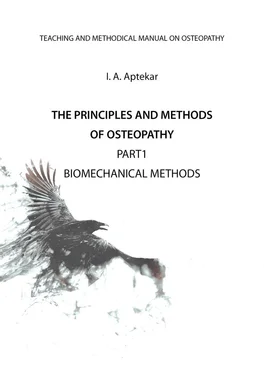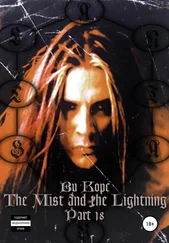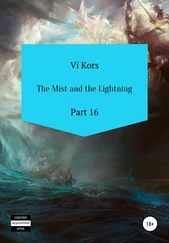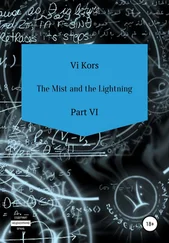The purpose of the function is to adapt effectively.Functional activity has its manifestations. And with reference to the functional activity of the organism, this can be various oscillatory fluctuations of a rhythmic nature. Rhythm as a characteristic of a wave oscillation has certain parameters that allow judging the state of a function.
Thus, the view that somatic dysfunctionis primarily is a global violation of the adaption of the entire body, the entire soma, finds its confirmation. This is a violation of the integrity of the body. Violation of synchronous functioning of all organs and systems as a whole, and not in the form of separate anatomical formations.
That is why, speaking of somatic dysfunction in pediatric practice, we primarily mean a global violation of the whole.
For the same reason, in working with children under 3—5 years of age, we use a biomechanical method exclusively for diagnostic purposes. And the therapeutic component is in the field of the functional and biodynamic model of perception.
Knowledge of all the sections of the human’s body’s anatomy, physiology and biodynamics allows the doctor – osteopath not only to understand the interrelations of the whole, but also to find the causes of violations of these interrelations. And, more significantly, in these violations find elements of health and create conditions for its growth and development as a whole.
Functional impairment, or somatic dysfunction, is manifested at the biomechanical level by a change in the state of biomechanical unity; at the functional level – a violation of the synchronous implementation of functions relative to each other and relative to global body functions; at the biodynamic level – a violation of the integrity of the organism and its habitat (mother Nature), of which it is a part.
In osteopathy, it is customary to distinguish three models of perception, or three methods: biomechanical, functional and biodynamic.
One of the reasons for the conditional division is not so much in the level of impact on which the osteopathic physician works, but in the level of perception that he is capable at the moment.
The second, no less significant reason is that a violation of adaptation mechanisms with the subsequent formation of somatic dysfunction can occur at the level of biomechanical interactions, or at the level of functional interactions of a part with respect to the whole, or at the level of interaction of a person and the surrounding world, of which he is a part.
From the point of osteopathy, man is not a collection of parts in the form of bones and joints, fasciae, muscles, ligaments, internal organs and body fluids. This is a holistic functional unity. It is a system that is in a continuous, balanced and synchronized movement of all its parts and components.
All movements of the human body (internal and external) have qualitative and quantitative characteristics and are one of the manifestations of its functional activity.All functions of the body are aimed at maintaining homeostasis in the process of interaction with the external environment.
Global movement of the whole
On the one hand, we observe the mobility of the whole body from the point of view of the biomechanics of anatomically resolved arbitrary and involuntary movements.
On the other hand, in the process of perceptive diagnostics, the global mobility of the human body is felt as a holistic vibration of a certain force, frequency and amplitude. It can be felt under the hands.
The origin of this movement can be explained by the superposition and synchronization of local, regional and global manifestations of the functions of all parts and systems of our organism.
What we perceive at hand in the process of perception and palpation, in this case is one of the manifestations of the living integrity of the human body – the system, integral not only in relation to itself, but also in relation to the surrounding world.
What do we actually perceive in the process of the perceptive diagnostics? The manifestation of life? Mobility? Involuntary, available, present movements? Fluctuations, wave rhythms as manifestations of various functions?
Perceptually, we can “observe” that local rhythms are synchronized with respect to global endogenous rhythms. And global fluctuations of the whole body, in turn, are synchronized with respect to exogenous (ecological) rhythms.
The function of a single cell, tissue, organ, systems of organs in itself, apart from the body, has neither meaning nor sense. As it has no meaning and sense a violin without strings, a bow, a musician, who is proficient in it, and a place where he can realize his skills.
Violation of synchronicity of interaction between parts of the body leads to a functional and biomechanical violation. The ability of the human body to adapt to changes and to interact effectively with the surrounding world is changing.
The volume of functional mobility decreases, qualitative characteristics of arbitrary and involuntary movements change toward limiting and increasing the volume of the elastic barrier. Somatic dysfunction develops as a manifestation of the function of health.
Sanogenetic reactions of the body, aimed at maintaining homeostasis, go beyond the limits of physiological comfort, forming clinical manifestations of somatic dysfunctions. As a result, the immune and autonomic nervous systems are weakened.
Sanogenetic manifestations of their functioning, arising in the process of adaptation to changing environmental conditions, cease to be physiological, forming a pathogenetic reaction.
The body adapts but with certain losses. Accumulating, the pathophysiological reactions (adaptations) of the body require additional “attention”, additional adaptations.
Thus, secondary somatic dysfunctions are formed often with clinical manifestations. Correction of secondary somatic dysfunctions is nothing more than symptomatic therapy. Solving current problems does not remove the basic lesion, but more often significantly improves the patient’s condition.
In cases when adaptation mechanisms are weakened, “internal doctors” cannot timely correct violations. Initially, there is a functional deformation, then a functional disorder. Without clinical manifestations. They appear in the future forming a disease.
Disease is a variant of adaptation of the organism to changing environmental conditions that has gone beyond the limits of the functional norm.
Disease is a manifestation of health, the struggle of the organism for its functional integrity, for survival.
Therefore, our task is not only to eliminate, if possible, the primary etiological factor of osteopathic lesion and somatic dysfunction, but also to create conditions under which self-correction of the organism and control mechanisms will function in the normal physiological mode.
Osteopathic lesion is a complex of functional reactions of the body as a response to the direct action of exogenous factors.
The lesion field is a complex of reactions of the organism in the process of its adaptation to the damaging exogenous factor. The lesion field has its own boundaries, the center (fulcrum).
Thus, somatic dysfunction is a manifestation of health in the form of physiological organism’s reactions in response to osteopathic lesion.
The main role of the doctor – osteopathis manifested in many respects not only in the diagnosis and correction of osteopathic damage (lesion) and somatic dysfunctions, but also in the prevention of violation of functional unity, the vital integrity of the human body, dysfunctional changes in the immune and autonomic nervous systems. All that breaks the functional connection with the outside world of which we are a part.
Читать дальше












